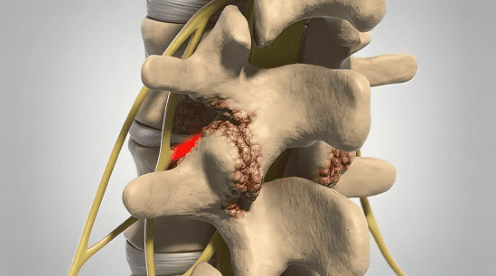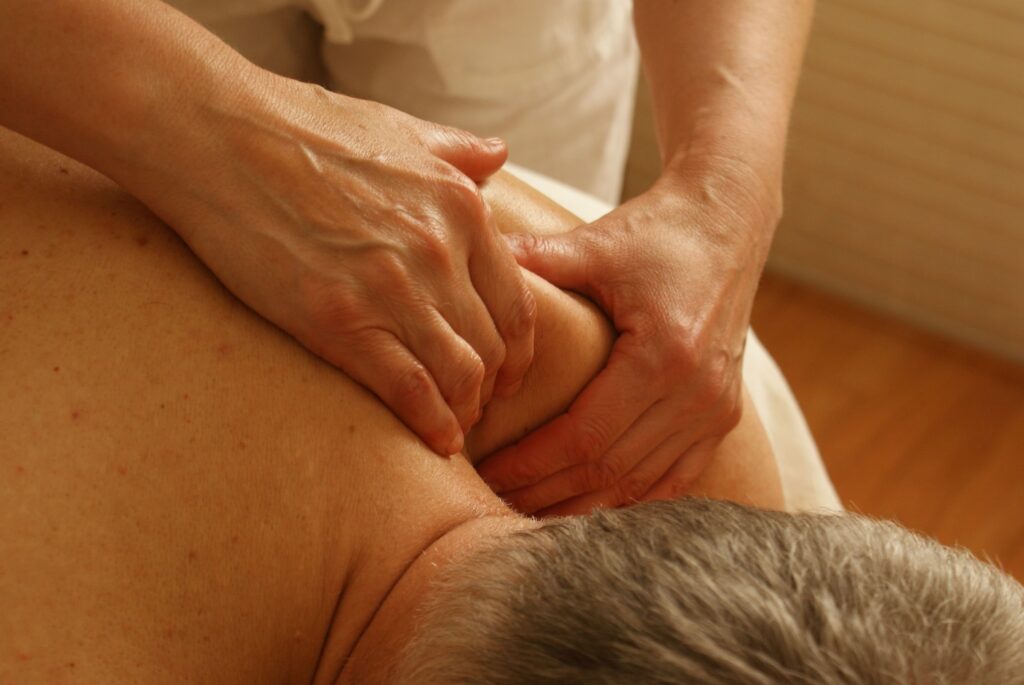- (213) 369-4583
- Monday - Friday
- 9 am - 5 pm
Disc Osteophyte Complex: Symptoms, Causes, and Treatments

Sep 13, 2022
Disc osteophyte complex is a spinal ailment caused due to the formation of osteophytes in the spine affecting the intervertebral disc. Osteophytes (also called bone spurs) are the bony outgrowths that can develop as a result of your body's natural reaction to any damage or irritation caused to the bones or ligaments in the spine. These bone spurs when developed on multiple vertebrae can causes compression in the spinal cord or on the nerve roots.
See a spine surgeon in Los Angeles: If you are experiencing any symptoms of Osteophyte complex, you can consult our doctor in Los Angeles by calling at 213-369-4583 or filling out the contact form on our website.
You might also want to read: What are the things to avoid when suffering from Cervical Spinal Stenosis?
Causes and Symptoms of Disc Osteophyte Complex

As mentioned above, the development of osteophytes is a result of the body's reaction to damage. This reaction can take place due to one of the following reasons;
- It can be due to shock, trauma, or any direct injury to the bones in the spine.
- The Disc Osteophyte complex can also occur due to aging or obesity as both weaken the spine over time. As a result, the body starts producing bone spurs to provide stability to the deteriorating structure of the spine.
- Bone spurs that lead to the development of the Disc Osteophyte Complex can also be caused when the cartilage between the discs is torn.
At times, symptoms do not become noticeable immediately. When the bone spurs start to grow, they start compressing the nerves giving you a sensation of mild pain. Depending upon the location of the osteophytes (Cervical, Thoracic, or Lumbar), a patient can show different symptoms including;
- Stiffness in the neck
- Headache
- Numbness and tingling in one or both arms
- Weakness in arms or legs
- Radiating pain in arms, shoulders, or thighs
- Pain that increases with physical activities
How is the Disc Osteophyte Complex diagnosed?
You might already know that the spine is categorized as cervical (C1-C7 vertebrae), thoracic (T1-T12), and lumbar (L1-L5). Osteophytes can be developed in any part of the spine. For diagnosis, your doctor will start by going through your medical history. He/she will also check for swelling and points of pain by palpation. If a patient shows signs of Disc Osteophyte Complex in physical examination, the doctor conducts imaging tests like X-ray or MRI to get an internal picture and ensure the presence of the disease.
Treatments for Disc Osteophyte Complex
Once the presence of the Disc Osteophyte Complex is confirmed, patients can be recommended surgical or nonsurgical treatments (such as using pain-killers, massages, and back braces). It primarily depends upon the medical condition of the patient and the severity of the disease for determining what treatment to go for. Conservative treatments include the following;

Therapy and Massage - Therapies involve gentle exercises, yoga, and stretches that help to relieve tension around the spine muscles and improve the range of motion in vertebrae.
Medications - Non-steroidal drugs, pain killers, muscle relaxants, spinal injection, and anti-inflammatory medications (NSAIDs) are the medications doctor normally recommends for pain relief due to bone spurs.
Weight control - If you are overweight, the first thing your doctor will tell you is to lose weight. Maintaining a healthy weight takes the pressure off the spine and decreases the pain due to bone spurs.
Acupuncture - Some acupuncturists claim to treat pain due to bone spurs using herbal products.
Related readings: You can read about the comparison between surgical and non-surgical treatments for back pain in another article on our website.
Non-surgical treatments can only help in relieving pain but they do not provide a permanent solution to the problem. Bone spurs keep growing over time and can cause severe pain (paralysis in some cases) if left untreated.
Osteophytectomy Procedures
The procedure through which osteophytes or bone spurs are cut is called osteophytectomy. According to the diagnostic reports, different surgical procedures can be used to treat Disc Osteophyte Complex.
Laminectomy
This procedure is carried out when bone spurs are compressing the spinal nerves. The doctor removes the bone spur or any other tissue which is causing pressure on the nerve roots. This creates space for the compressed nerves to relax and thus relieves the patient of the pain.
Foraminotomy
Foraminotomy serves the same objective as Laminectomy however, instead of removing a part from the vertebrae, it enlarges the pathway (known as Formen) through which nerves pass.
Open vs Minimally Invasive Surgery
In the past, most surgical treatments required making a large incision in the body. This approach had many drawbacks; more pain, longer hospital stays, and longer recovery time to name a few. With the advent of technology in the field of surgery, now doctors can treat patients with video-assisted surgeries. This method is called Minimally Invasive surgery. Disc Osteophyte Complex can be treated with such a procedure provided that the surgeon has the required skills and equipment.
Recovery after Surgery
Like with any other major surgery, recovery after osteophyte removal also takes time. If the procedure was minimally invasive, the healing process is relatively faster. However, in the case of open surgery, complete recovery can take up to anywhere between 3 to 6 months.

Talk to a Neurosurgeon in Los Angeles
If you have been experiencing any symptoms indicative of Disc Osteophyte Complex, you can talk to our doctors at Southern California Brain & Spine Surgery. Here we have Dr. Moksha Ranasinghe who is a provides healthcare services to patients suffering from spine and brain diseases. You can easily schedule an appointment by filling out the contact form available on our website or calling (213) 369-4583.




